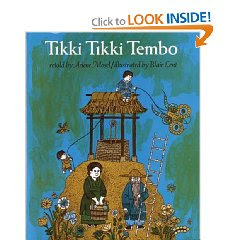
The Duel, by Eugene Field
The gingham dog and the calico cat
Side by side on the table sat;
'Twas half-past twelve, and (what do you think!)
Nor one nor t' other had slept a wink!
The old Dutch clock and the Chinese plate
Appeared to know as sure as fate
There was going to be a terrible spat.
(I wasn't there; I simply state
What was told to me by the Chinese plate!)
The gingham dog went "bow-wow-wow!"
And the calico cat replied "mee-ow!"
The air was littered, an hour or so,
With bits of gingham and calico,
While the old Dutch clock in the chimney-place
Up with its hands before its face,
For it always dreaded a family row!
(Never mind: I 'm only telling you
What the old Dutch clock declares is true!)
The Chinese plate looked very blue,
And wailed, "Oh, dear! what shall we do!"
But the gingham dog and the calico cat
Wallowed this way and tumbled that,
Employing every tooth and claw
In the awfullest way you ever saw
And, oh! how the gingham and calico flew!
(Don't fancy I exaggerate
I got my news from the Chinese plate!)
Next morning where the two had sat
They found no trace of dog or cat;
And some folks think unto this day
That burglars stole that pair away!
But the truth about the cat and pup
Is this: they ate each other up!
Now what do you really think of that!
(The old Dutch clock it told me so,
And that is how I came to know.)
We read this poem and talked about the personification (A figure of speech where human qualities or abilities are given to inanimate objects or abstract notions.) of the clock and plate. We discussed how, even though it is part of the personification, clocks actually do have hands in front of their face and that Chinese plates often are literally blue. We also discussed the nonsense of two stuffed animals fighting.
This poem reminds me of the folk poem about two dead boys.
One bright day in the middle of the night,
Two dead boys got up to fight.
Back to back they faced each other,
Drew their swords and shot each other.
A deaf policeman heard the noise
And came to arrest the two dead boys.
If you don't believe my story’s true,
ask the blind man, he saw, too.
This is how I remember my mom telling it to me. However, there are many versions.
Here is a link to The British Columbia Folklore Society’s information and analysis of the poem.

















